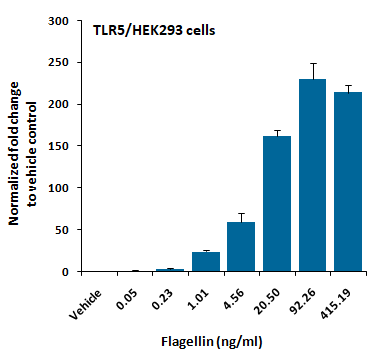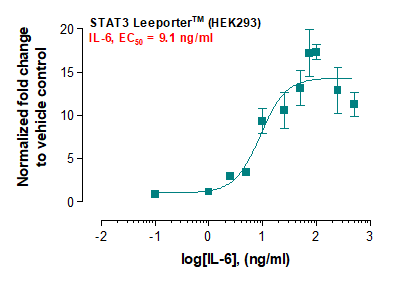Recombinant Human 17 beta-Hydroxysteroid Dehydrogenase 10/HSD17B10 (C-6His)(Discontinued)
Shipping Info:
For estimated delivery dates, please contact us at [email protected]
| Amount : | 50 µg |
| Content : | Supplied as a 0.2 µm filtered solution of 20mM Trsi HCL pH-8,0.1M NaCl,1mM DTT & 10% glycerol. |
| Storage condition : | Store at -20°C, stable for 6 months after receipt. Please minimize freeze-thaw cycles. |
| AA sequence : | MAAACRSVKGLVAVITGGASGLGLATAERLVGQGASAVLLDLPNSGGEAQAKKLGNNCVFAPADVTSEKDVQTALALAKGKFGRVDVAVNCAGIAVASKTYNLKKGQTHTLEDFQRVLDVNLMGTFNVIRLVAGEMGQNEPDQGGQRGVIINTASVAAFEGQVGQAAYSASKGGIVGMTLPIARDLAPIGIRVMTIAPGLFGTPLLTSLPEKVCNFLASQVPFPSRLGDPAEYAHLVQAIIENPFLNGEVIRLDGAIRMQPVDHHHHHH |
Source: Human Cells.
MW :28kD.
Recombinant Human HSD17B10 is produced by our Mammalian expression system and the target gene encoding Met1-Pro261 is expressed with a 6His tag at the C-terminus. 3-hydroxyacyl-CoA dehydrogenase type-2(HSD17B10) belongs to the short-chain dehydrogenases/reductases (SDR) family. HSD17B10 is ubiquitously expressed in normal tissues but is overexpressed in neurons affected in AD. It functions in mitochondrial tRNA maturation. It catalyzes the beta-oxidation at position 17 of androgens and estrogens and has 3-alpha-hydroxysteroid dehydrogenase activity with androsterone. It also catalyzes the third step in the beta-oxidation of fatty acids and carries out oxidative conversions of 7-alpha-OH and 7-beta-OH bile acids. The protein exhibits 20-beta-OH and 21-OH dehydrogenase activities with C21 steroids. By interacting with intracellular amyloid-beta, HSD17B10 may contribute to the neuronal dysfunction associated with Alzheimer disease (AD).
MW :28kD.
Recombinant Human HSD17B10 is produced by our Mammalian expression system and the target gene encoding Met1-Pro261 is expressed with a 6His tag at the C-terminus. 3-hydroxyacyl-CoA dehydrogenase type-2(HSD17B10) belongs to the short-chain dehydrogenases/reductases (SDR) family. HSD17B10 is ubiquitously expressed in normal tissues but is overexpressed in neurons affected in AD. It functions in mitochondrial tRNA maturation. It catalyzes the beta-oxidation at position 17 of androgens and estrogens and has 3-alpha-hydroxysteroid dehydrogenase activity with androsterone. It also catalyzes the third step in the beta-oxidation of fatty acids and carries out oxidative conversions of 7-alpha-OH and 7-beta-OH bile acids. The protein exhibits 20-beta-OH and 21-OH dehydrogenase activities with C21 steroids. By interacting with intracellular amyloid-beta, HSD17B10 may contribute to the neuronal dysfunction associated with Alzheimer disease (AD).
Endotoxin : Less than 0.1 ng/µg (1 IEU/µg) as determined by LAL test.
For Research Use Only. Not for use in diagnostic/therapeutics procedures.
| Subcellular location: | Mitochondrion |
| Tissue Specificity: | Ubiquitously expressed in normal tissues but is overexpressed in neurons affected in AD. |
| BioGrid: | 109278. 389 interactions. |
|
There are currently no product reviews
|
















.png)













